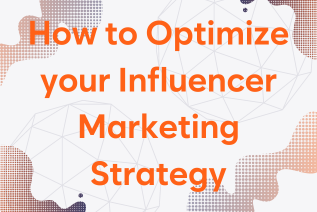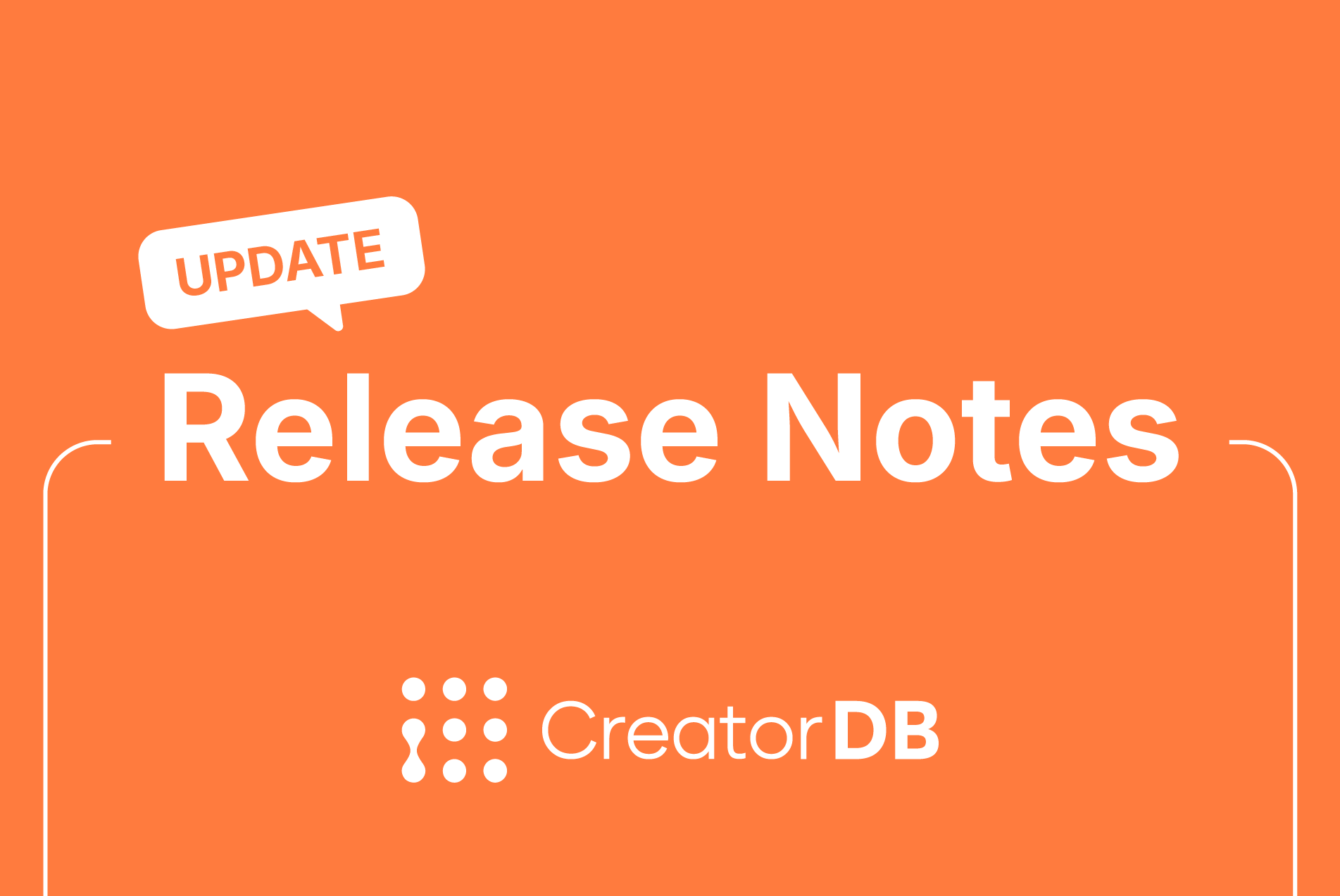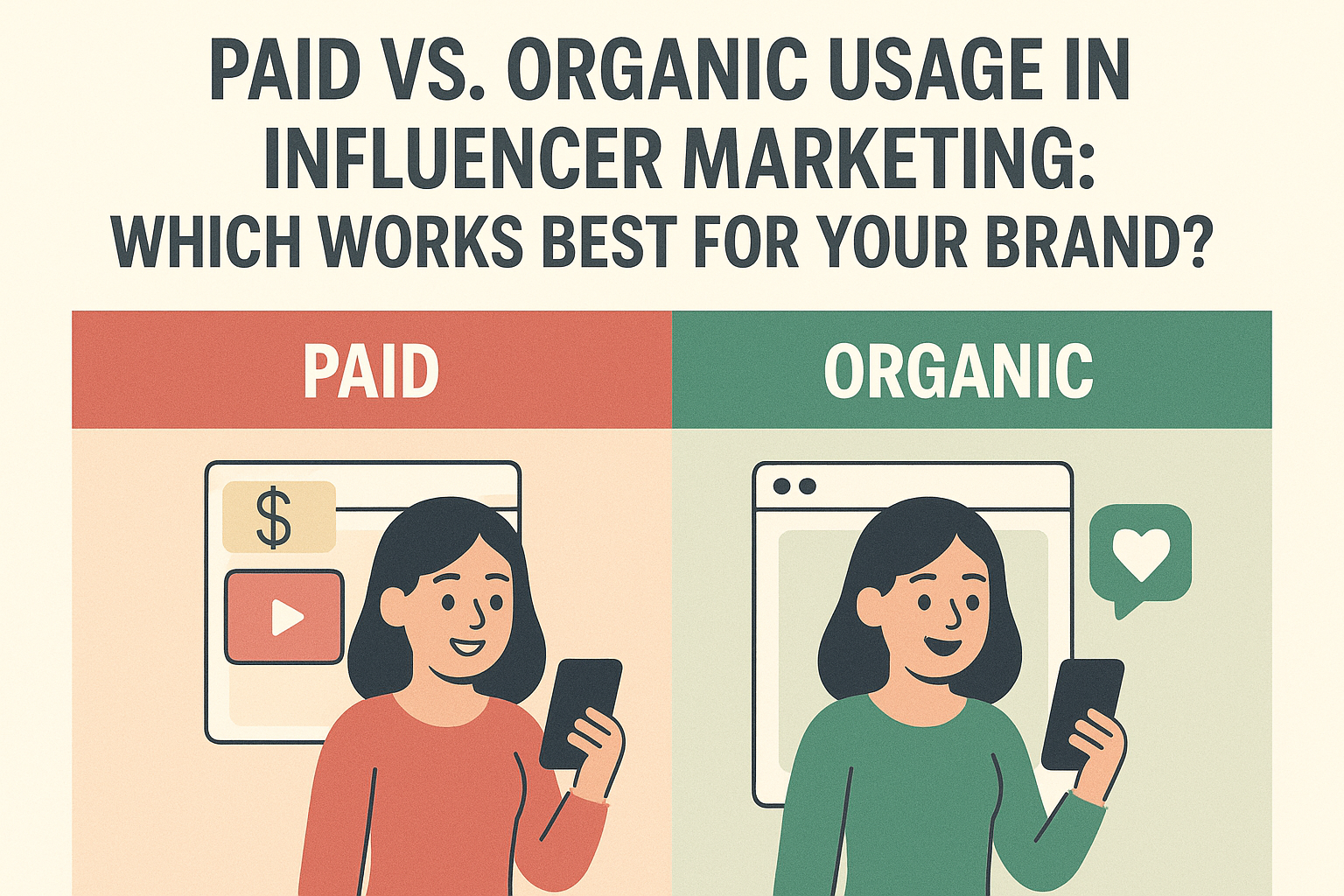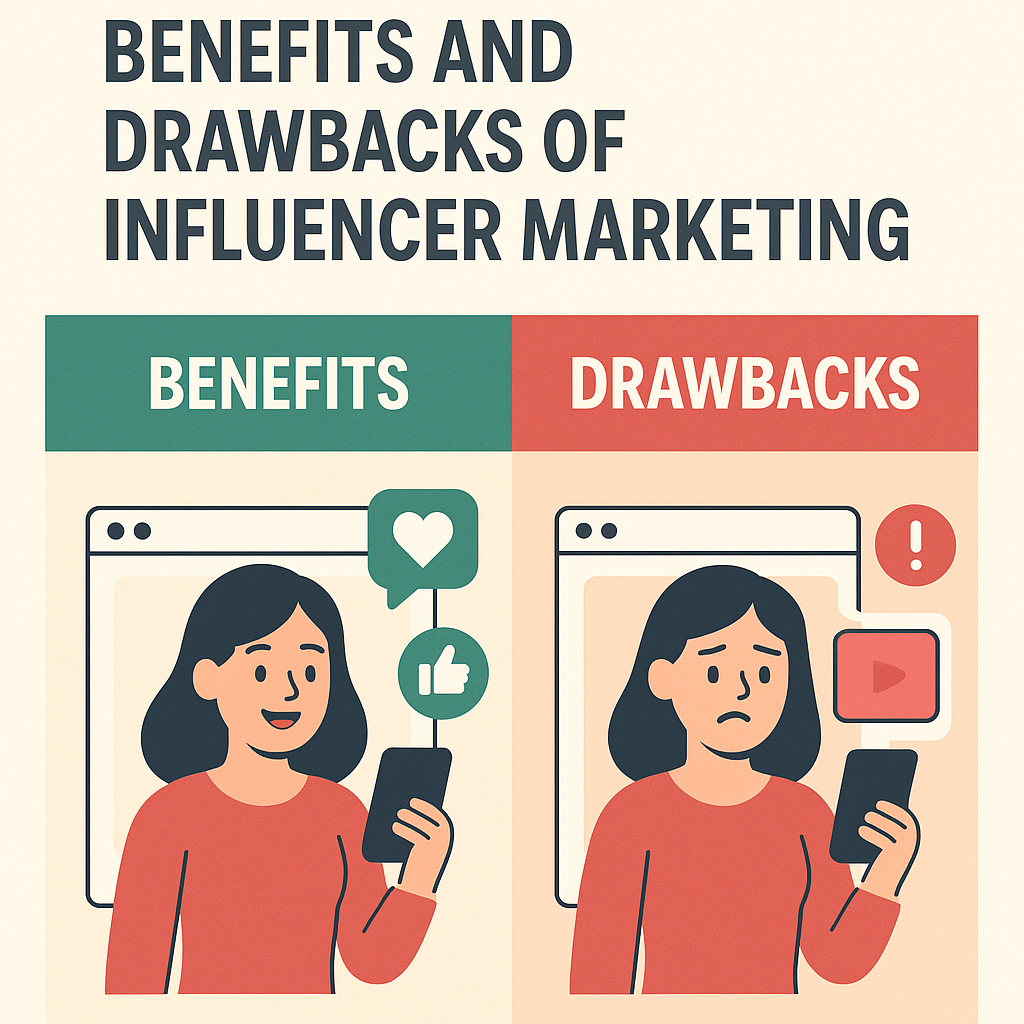Influencer marketing is a must-have for any serious marketers. However, setting up an effective influencer marketing strategy is less than simple. After creating tens of campaigns here at CreatorDB we finally gathered all we learned for you to step up your game.
Our approach is to be involved, but not overbearing in all the steps of the campaign. From inception to delivery it should carry your brand imprint. Otherwise, you will just be a footnote in a sea of content.
To create effective campaigns you need to combine data with relationships, understand specific online and offline communities, and craft unique courses of action.
Influencer marketing can be so effective because is a cross-over episode. And everyone loves a cross-over episode.
You can combine your brand personality with the influencer’s personality. Have them play off each other. Show how sometimes is about having a good time and enjoying life.
But this is enough of this hippie bullshit. Let’s get to the serious work.
Understanding Your Audience
Obviously, you are not creating a campaign just because you saw someone doing it and you thought it was cool. You want to sell something and you imagined that an influencer could help you there.
And that is a valid point, they can probably help you. But there are so many different ones that you will need to narrow down your target audience to find which ones are more relevant.
Defining Your Target Audience
Who do you want to talk to and why? These are essential information to know for any marketing campaign and influencer marketing campaigns are no different.
However, it can be easier to identify relevant influencers than other marketing channels. Once you know the interests of your target audience you just need to find which influencers talk about those or related topics and you are likely to be talking to your target audience.
Testing content Verticals
But not always sticking to the most obvious is going to work. And there are many examples of collaboration that may sound random but they worked and show how dare something different can deliver a big payback.
At CreatorDB, we created a campaign to boost Notion’s signups in Japan and Korea. We partnered with influencers who had an angle on keeping things organized and therefore a clear use case for the product. But we also had a hunch that content like ASMR could have a connection with a similar audience.
When we tested our hypothesis we found out that there was indeed a connection between ASMR and our target audience. So much so that when was time to go to phase two ASMR influencers were activated once again.
Testing similar hypotheses should always be a part of one campaign. You want to concentrate your efforts on what is ensured to deliver. At the same time, you don’t want to leave occasions slipping by just because you did not take a chance.
Identify how different communities react
Online communities are not always the most easy communities to interact with. While most people will be happy to see their favorite influencer getting a sponsorship, some communities may be opposed to advertising and see it as a selling out.
This can be the case for specific products. For which some of your competitors’ bad practices may have tainted the name. Or in general a rejection of sponsorships as a whole.
To identify these situations you can use tools that highlight previous sponsorships and provide sentiment analysis for the content.
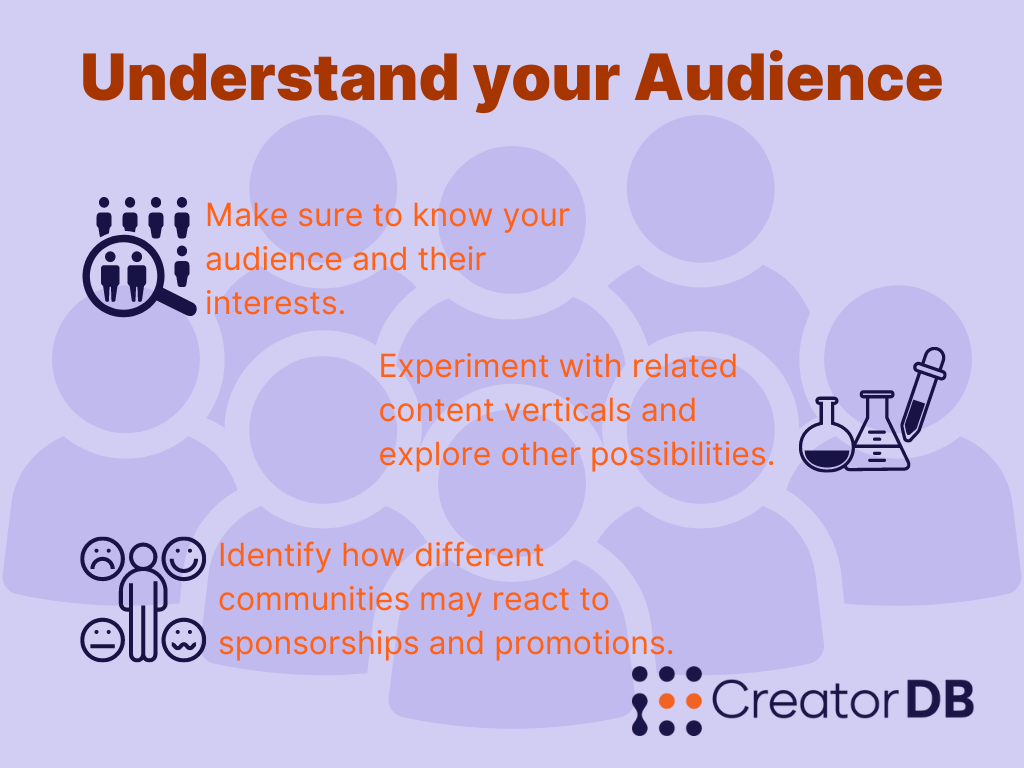
Choose the Right Influencers
Once you have identified a relevant audience, you can look at the creators they turn to. Likely there will be multiple relevant influencers for you to consider.
There are three major considerations to keep in mind when choosing. Plus a fourth, bonus one, which often doesn’t apply to the first campaign but can be a game-changer for recurring campaigns.
Relevance & Alignment
First and foremost you need to understand if any specific content creator you are shortlisting is relevant. Not only towards your audience but also towards your brand itself.
Look at the content, what’s their outlook on relevant topics, and how they interact with their audience and with your values.
Influencer marketing is so much more powerful when the connection between the brand and content creator is not just a monetary one. When a collaboration stems from a true affinity and appreciation for a product or brand, it is when you can see influencers shine and tremendously outperform any other channel.
Engagement vs. Reach | Micro vs. Macro Influencers
A second important point to understand when picking influencers to partner with in a campaign is the contrast between engagement and reach.
Small influencers tend to have much higher engagement, being able to connect with their audience at an almost personal level. Large influencers, meanwhile, can have your message seen by many more people but a smaller percentage of them will engage with it (it may still be a larger total number).
Generally speaking, the larger the audience grows the less connected the average member is to the content creators. Extremely big influencers, like the Kardashians, are more akin to celebrities than “pure” influencers.
Performances and Trends
To properly understand the fit of an influencer with your brand and your goals is important to put their stats in context. Not only by looking at their results right now but also considering their track record.
Are their subscribers growing? Is the engagement that they receive constant? And how can the numbers explained?
Is important to look at each possible campaign partner’s results over time to avoid partnering with creators who have fallen through with their audience or are buying followers and engagement.
Influencers vs. Advocates
The best influencers are the ones that you would not have to brief about your product. Not because they can make up a sales pitch on the fly but because they already use it.
If your product has been on the market for a certain time is very likely that there are influencers who like it, use it, and have mentioned it before.
Identifying these influencers and contacting them for your campaign will make a great advocacy base. These creators are organically interested in your products and their endorsement will be much more felt than any paid sponsorship.
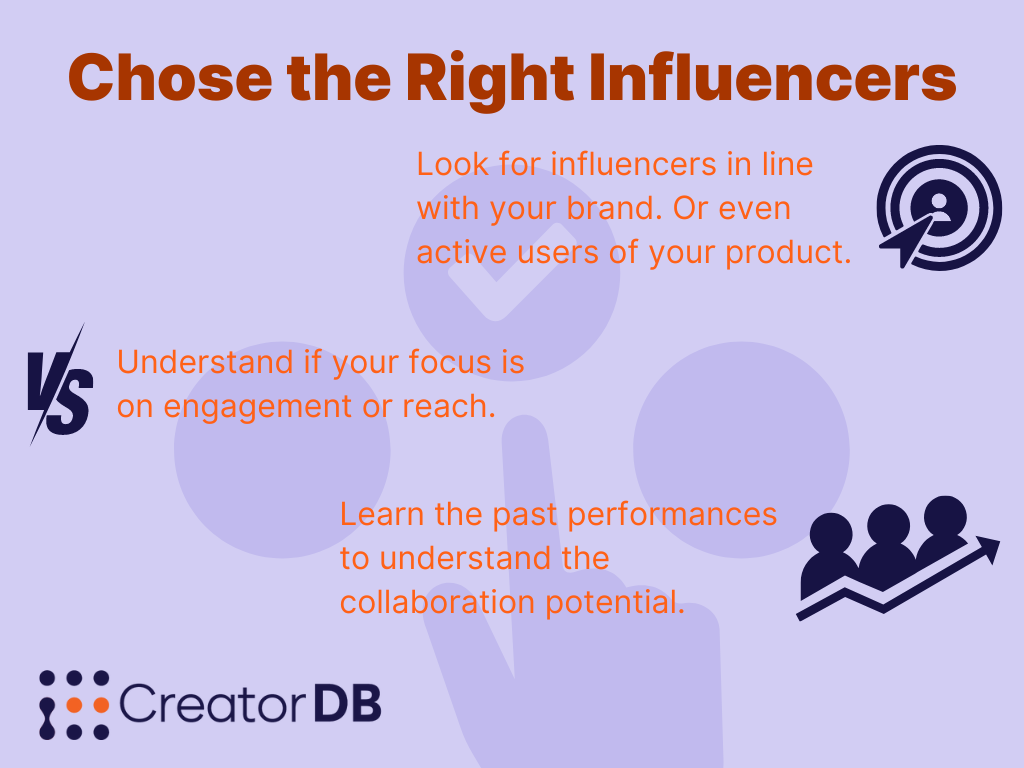
Best Practices for an Influencer Marketing Strategy
Now you know who you want to talk to. Plus you have found out some influencers that talk your talk and walk your walk. Is time to create a plan of action.
You may also want to let the influencer know that you plan to make a campaign with them, and here is all about how to do it.
Setting Clear Objectives
Is important to know where you want to arrive. As important as knowing with who you want to talk.
To be sure that you are creating goals that make sense and help your brand you can use the SMART approach.
Specific
Your goal must target a particular area. For example “improve sales” is a specific goal, while “have the company do better” is not.
Measurable
Your goal must have some way to be quantified. If you want to “improve sales” the number of items sold is going to be the simple way to quantify it.
Achievable
It has to be possible to reach the goal in the given time frame. “Improve sales” by 2.000% in a week would everyone at the company revere you as the master of marketing forever, but how likely is it to happen? Improving them by 10% in a month is more likely to be achieved.
Relevant
The goal must be in line with the overall goals of the company or department. “Improve the morale of the company by 20% with teambuilding activities” is a noble cause but may be better left to HR and not done by marketing.
Time-Bound
Is important that your goals have a clear timeline. You don’t want to have to keep looking at it forever.
Content Collaboration
Once you have a clear goal and influencers to work with, is time to make some content. Creators are most often very creative people, and is important that you keep it in mind.
While other channels only provide a medium for you to spread a message that is completely coming from you influencer marketing is different.
You want to bring together your brand identity and the influencer personality in your campaign. So when you pitch them with the campaign be open to suggestions. Invite suggestion.
Of course, they can read your ads and showcase your products. But they can do much more. Encourage them to give their spin and showcase their personality and creativity through this collaboration.
Creative oversight
Of course, having creative people interjecting their ideas and creating content according to their interpretation of what you want does not always work well.
You still need to keep an eye on the production cycle and retain veto powers over any kind of content before is published.
Balancing between creators’ ideas and brand image should be the hands-on part of any influencer campaign.
Timeline and Milestones
Creative people are not known to be also punctual. That can be a problem when managing many influencers at the same time and trying to have a campaign going live according to the timeframe that was established.
That’s why you should always create a timeline with milestones and periodical checkpoints between you and each influencer. This way will be easier to keep track of how everyone is doing at each point and coordinate the efforts.
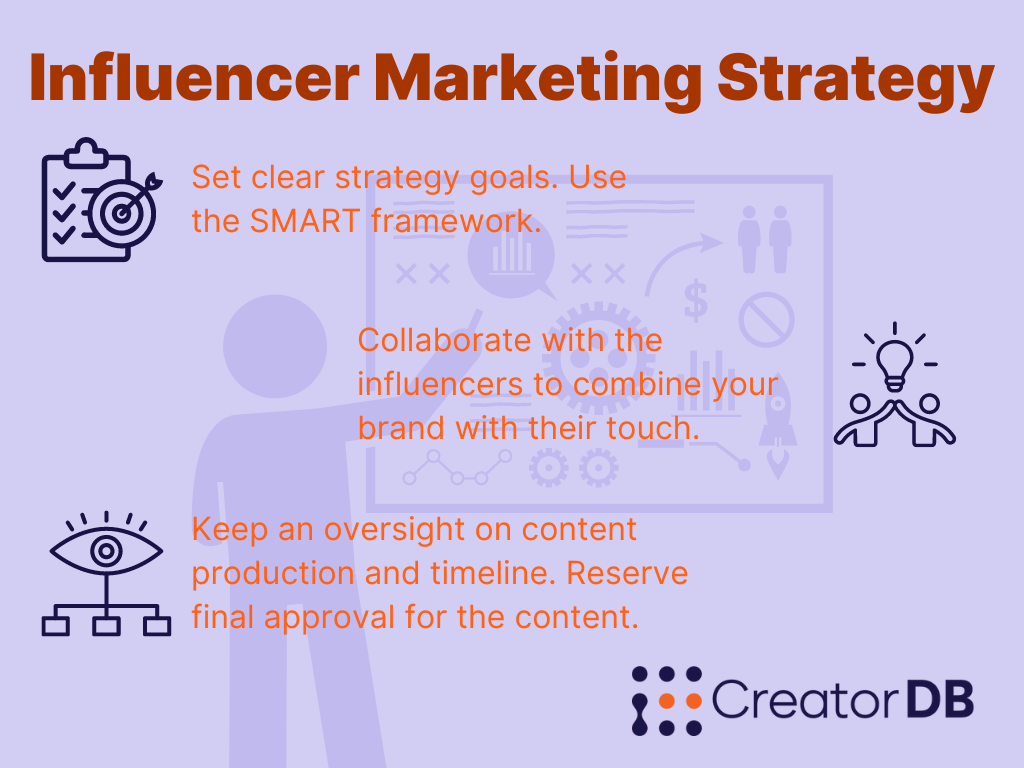
Foster a Creative Environment
Including the influencer’s creativity and take on your campaign is going to be one of the most important decisions for its success. But if done improperly it can resolve in a disaster, with content that does not match your brand or even influencer that would never work with you again.
And nobody wants anything of that. This is what you should do to avoid bad unexpected consequences.
Briefing and Onboarding
Once you have an agreement with an influencer, sit down with them and explain exactly what the campaign is about. Not just what they are there for but the whole idea and goals behind the campaign.
Give them a rundown of the core values of your company. Brand guidelines and messaging strategy, if they apply to them, should also be explained in detail.
Having a proactive approach to these elements at the core of the campaign and the brand will show that you value creators’ time and efforts.
Relationship Building
If you are planning to collaborate with the same influencer for longer than one collaboration, as you should, consider making it clear from the beginning. For an influencer knowing that you don’t just see them as a vehicle for your message but as a powerful ally in your brand journey is going to make a huge difference in how they approach your campaign.
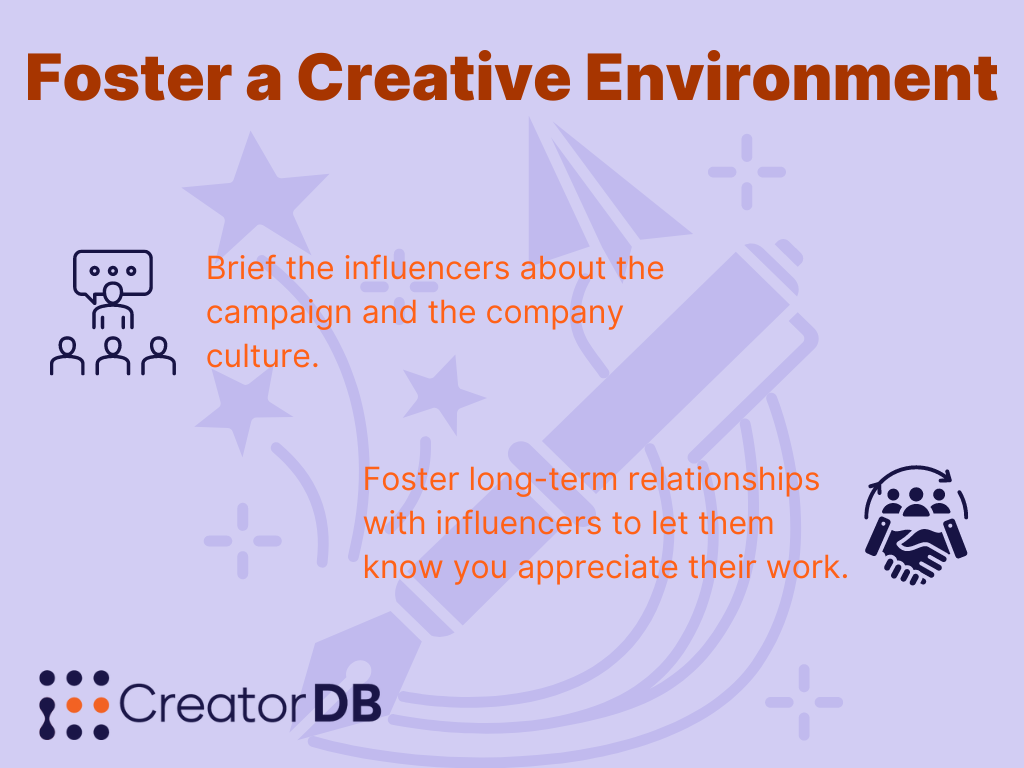
Measuring Success
Measuring and monitoring are important parts of any marketing campaign. But until recently it was thought that influencer marketing was different. That there was no way to measure results and see the connection between a sponsored post and sales.
Influencers indeed have a deeper impact than just pushing sales or engagement at the moment that a collaboration drops. So much so that one of our clients focused on using creators to improve it’s credibility and trustworthiness longterm.
But that doesn’t mean that their results and impact cannot be calculated.
Key Performance Indicators (KPIs)
The KPIs will be highly dependent on the goal of the campaign, the platform, and your overall influencer marketing strategy.
But in general, KPIs are measurable metrics that directly relate to the promoted content. Engagement rate, likes, mentions, or even conversions via custom links or social commerce can all be a measurement of the immediate efficacy of your campaign.
Data Analysis
Influencers in general leave a large data trail related to their posting. Is possible to collect and look at their performances for each of their pieces of content.
Taking into consideration their previous postings is going to improve the impact of tracking KPIs. Not only you will be able to tell if the campaign is successful for your set goals but also if the creator is over or under-delivering compared to their usual results.
Post-Campaign Review
Measurements are extremely important in the post-campaign process. As we saw before they are fundamental to put creators’ performances and results in context with their normal posting and their content vertical standards. But it goes further, good data collection and record keeping are going to help discover patterns and highlight opportunities for future campaigns.
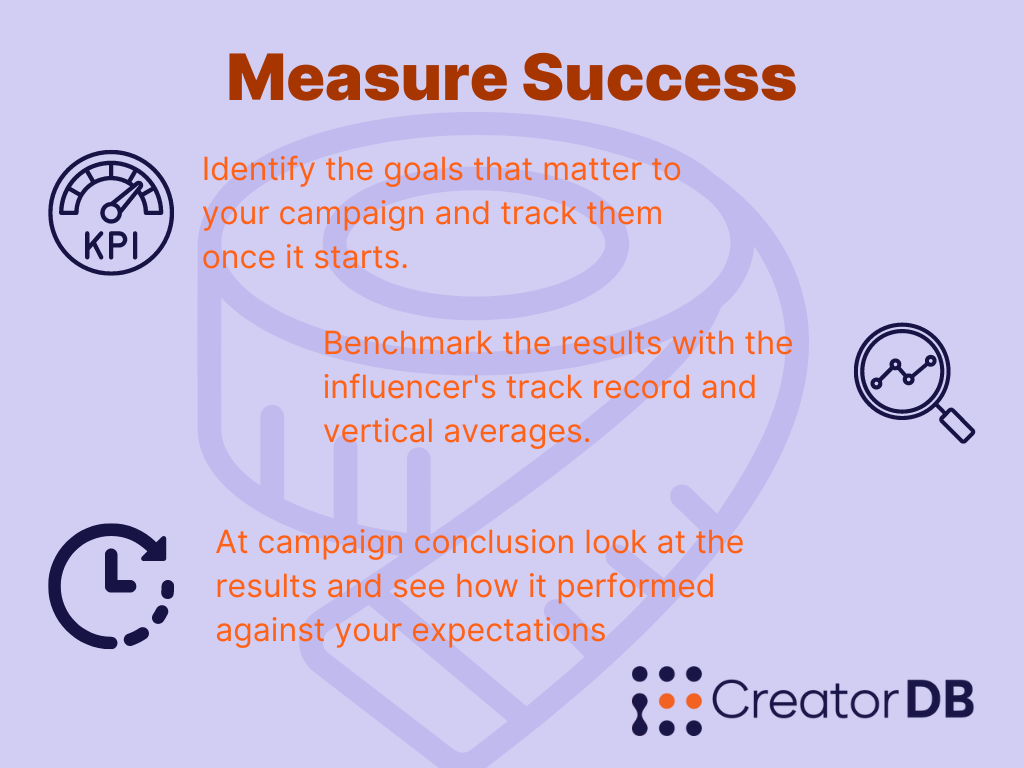
Conclusion
Creating an influencer marketing strategy is not an exact science, yet. But thanks to a few simple guidelines you can make sure that each of your campaigns will be a smashing success:
- Know who your audience is and what they like.
- Use the right framework to set objectives and expectations.
- Take advantage of creators’ creativity to boost the campaign’s wow factor.
- Measure results and benchmark them with previous outcomes.

Find Your
Perfect Influencer
Match Instantly
